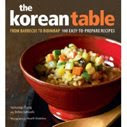
BURLINGTON — Standing in front of a tower of Korean grapes, restaurateur Jae Chung surveys the new H Mart. “Wow! Now I won’t have to drive to New Jersey,’’ he says. Opened last month — the first one in New England — this H Mart is the 30th store for the New Jersey-based chain owned by Korean businessmen. It began in 1982 and at this point moves into a region in a big way. The footprint is the size of a football field. The store combines elements of Asian and American supermarkets, department store-type concessions, and a food court anchored by a French Asian bakery. Some customers look like they’re participating in a supermarket sweepstakes race. Carts are piled high with boxes threatening to topple over. All Asian cuisines are represented here but Korean products dominate. Still, the fresh food is abundant: meats, poultry, seafood, vegetables, and prepared foods.
Since it opened its doors, H Mart has been jammed. (H stands for hanahreum, literally “armful’’; the company says it means “love and care for the customers.’’) The tall, slim Chung, 46, who owns several Jae’s enterprises in Boston and Western Massachusetts, is drawn to the store, to the bins of spicy kimchi, crocks of salted seafood, sacks of grains. Chung is touring the mega-market to explain ingredients and tell us how he’d cook them. One of his chefs, Yeong Sohn, joins us.
We start at one corner of the store, where the banchan (little dishes) and kimchi (fermented vegetables) are located. This is what you would find in a supermarket in Seoul. Chung was born in Seoul and moved to Clarksburg, a tiny town in the Berkshires, when he was 13. “I was the only foreign kid in town,’’ he says. Sometimes it embarrassed him to bring friends home because of all the unusual food smells and herbs his parents were drying that might have seemed weird.
At H Mart, Chung is right at home. Banchan, which are seasoned vegetables, tiny fish, seaweed, and wild herbs, are the base of a Korean meal. Chung notes that these prepared dishes will save home cooks hours of work. “This is a real boon for the Korean housewife,’’ he says. “Making these side dishes is labor intensive.’’ His parents made all these things themselves when he was growing up. The case is brimming with 20 kinds of kimchi, which is on the table at most Korean meals. “I like the New York [brand] kimchi. It is all natural with no MSG,’’ says Chung. H Mart carries other MSG-free brands. On weekends at H Mart, women wearing rubber gloves are making fresh kimchi and the lines to buy it are long.
At H Mart, Chung sees crocks filled with raw salted seafood in spicy sauces. “I love this stuff,’’ he says, and points to pollock roe, which is thousands of tiny eggs in a natural sack. Serving instructions are simple: “Drizzle with soy sauce and sesame oil and sprinkle on minced scallions,’’ he says.
The meat case is filled with cuts you don’t see at regular supermarkets: pork belly, sliced beef and pork for stir-fries, chicken feet. Chung picks up a package of something marked “LA beef short ribs’’ (LA is a type of bone-in rib, thinly sliced for table top barbecue). He likes these. “Good marbling,’’ he says. Then a quick recipe: “Sprinkle the meat with salt and pepper and marinate in a mixture of grated Asian pear, ginger, garlic, sake, soy sauce, and sesame oil for three to four hours. Cook in a frying pan or under the broiler. Serve with red leaf lettuce, red pepper paste, some raw garlic.’’
In the seafood department, most of the fish have heads and tails intact. There are fewer boneless pieces available, but lots of ready-cut sashi mi, split blue crabs, and pre-packed seafood hot pot ingredients ready to mix with water. Lobsters are in tanks, abalone is in the freezer section, and clams and mussels are on ice, ready for customers to scoop their own into a plastic bag.
An entire department is devoted to dried seaweed. In the produce section, there’s everything from lettuce to lotus root. Chung notices chubby white radishes called mu, something like daikon; slender red and green chili peppers; and unusual varieties of mushrooms. A refrigerated case is loaded with a half dozen brands of tofu in textures from silky to firm, as well as custard-like for sundubu chigae (tofu stew). Soy bean sprouts are beside the tofu. Korean Rx for colds: “Combine garlic, beef stock, and [soy] sprouts,’’ says Chung.
The restaurateur spots a mountain of Napa cabbage, the kind used for homemade kimchi. “Thirty years ago in Clarksburg we could only get the round green kind [of cabbage]. My dad made the kimchi and buried it in the backyard - the tradition.’’ In Korea, the cold ground kept the fermenting cabbage at the perfect temperature and provided vegetables when none were in season. Now some families in Korea and here have kimchi refrigerators that control not just the temperature but also the distinctive odor of fermenting vegetables. On the way to housewares, you can see one of these nifty fridges. You’ll also find specially designed plastic ware for kimchi, and the latest in electronic rice cookers, well-designed table top grills, steamers, and tableware, including stonepot bibimbap bowls.
“I’m just so happy to see these Korean items in a store like this. Usually you can only find them in mom-and-pop stores,’’ he says. He thinks H Mart is trying to appeal to a broad spectrum of Asian and non-Asian families, but notices that most of the food and housewares are items from Korea.
We round the corner, passing a store-long aisle of noodles, and turn into an alleyway of rice and grains. Brown, white, short grain, sweet rice, and dozens of others share space with bags of barley, millet, red adzuki beans, black and white soy beans, sorghum, and lentils. “Koreans like white rice, but it has no real nutritional value,’’ says Chung. “When I was in school in Korea, the government introduced all these beans and legumes to cook with rice and improve nutrition. The teacher would check our lunch boxes and you would get hit if your rice didn’t include a healthy mix of beans.’’ Many Koreans make their own rice blends today, but premixed grains are now available for the daily pot.
An abundant market makes customers hungry. We lunch on reasonably priced dishes in the food court: bibimbap, the classic rice and vegetable pot; sundubu chigae, the soft tofu dish; ja jang noodles, a spicy Korean-Chinese favorite; tteokpokki, rice cakes shaped like small tubes bathed in a fiery sauce; and Korean sushi, called kimbap.
H Mart president William Choi says the decision to open in the suburbs reflects the large Asian population now living outside the city. In fact, most customers are Asian. Those who aren’t, like Joan McDonough and her daughter, Melanie Donlan, both of Watertown, may receive advice from grandmotherly shoppers. “Eat kimchi. It will never make you fat,’’ announces Soon Kim, a handsome and slim 74-year-old from Salem.
Chung likes the notion that Korean food is being brought into the mainstream. “You’d think I was in Korea,’’ he says.
H Mart, 3 Old Concord Road, Burlington, 781-221-4570. For locations of Jae’s restaurants, go to
For more photos go to The Boston Globe's website
© Copyright 20092009 The New York Times Company



